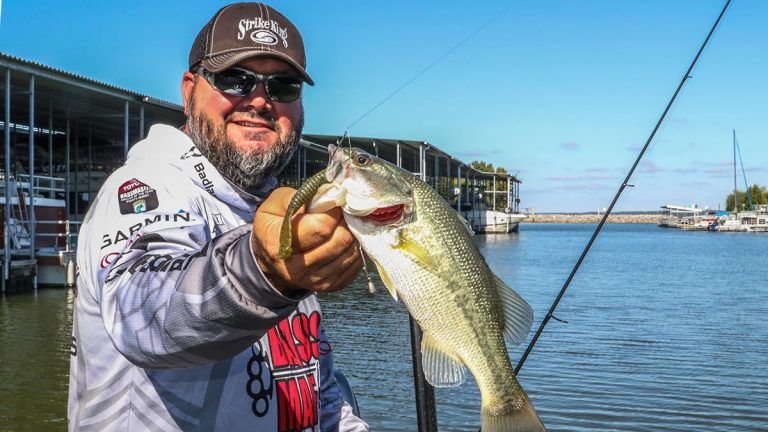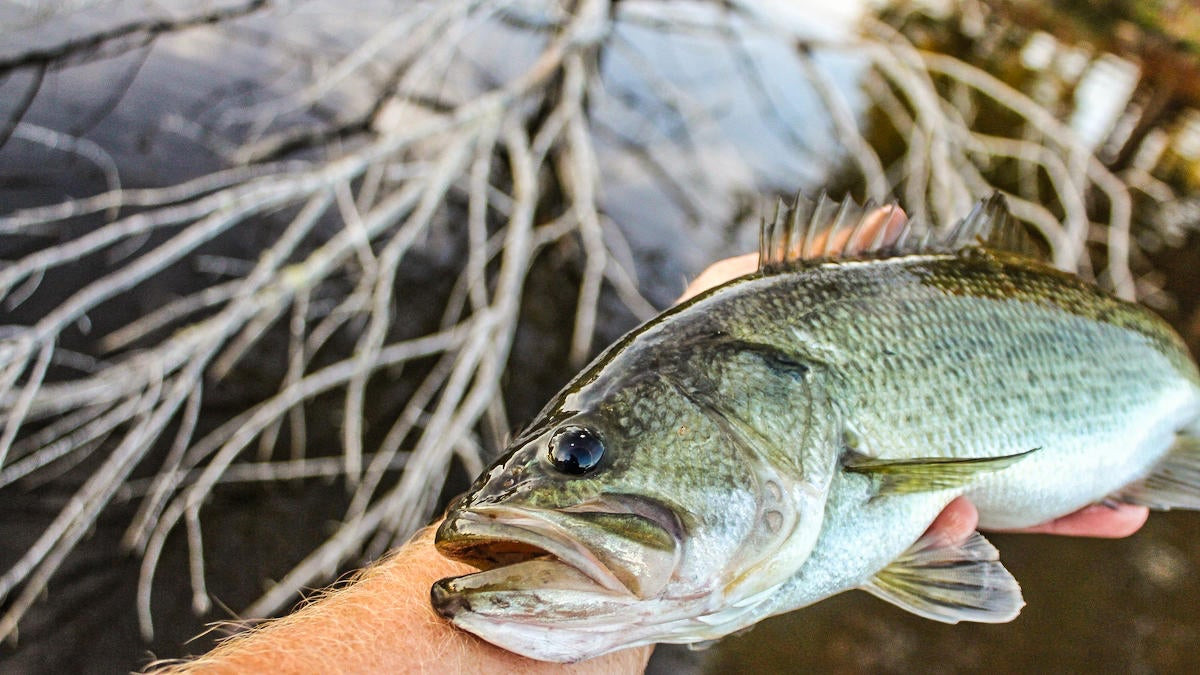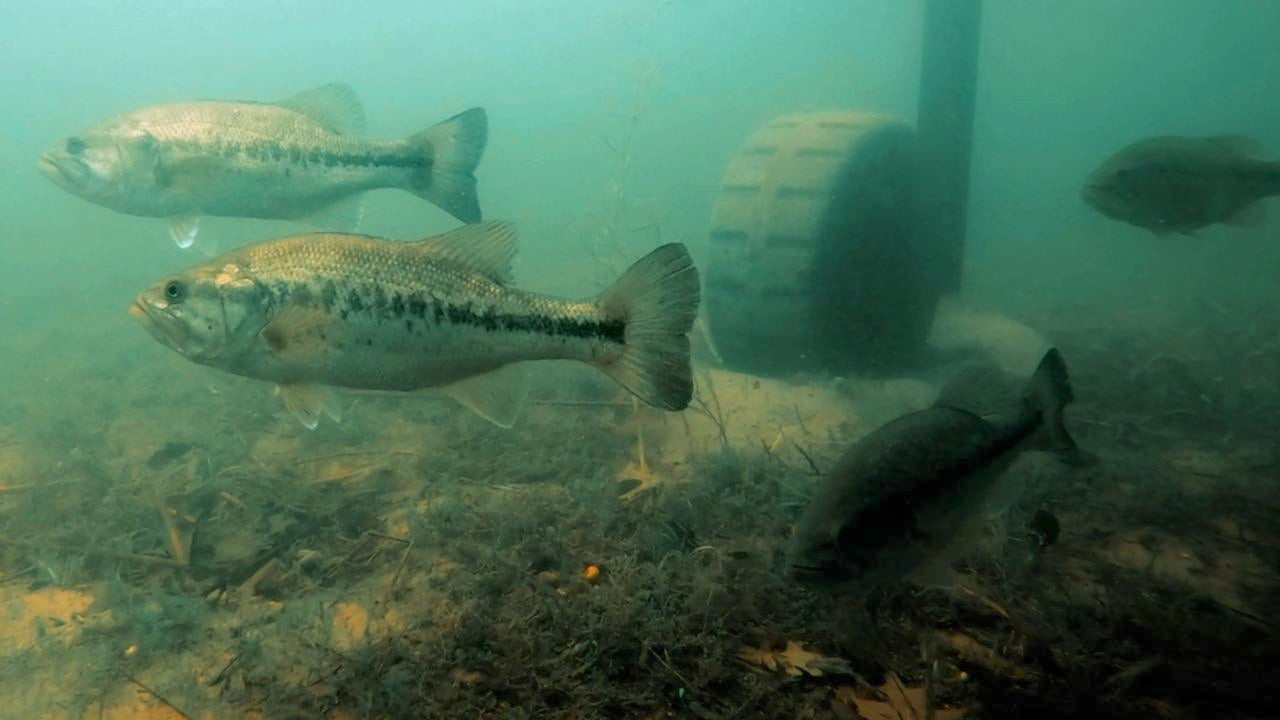The bait probably surprised the fish and triggered a reaction bite, so Greg Hackney set the hook and swung him aboard. Now, nine times out of 10, that name and that scenario would probably mean a stout flipping jig like the namesake Hack Attack Heavy Cover Flipping Jig, but this was different.
Hackney was targeting isolated brush in front of a marina slip with a drop shot — a bulked-up drop shot fitted with a Strike King Menace. This, along with his other go-to, a Strike King Rodent, presents a more substantial profile than the Strike King Dream Shot, Perfect Plastic KVD Finesse Worm or the Baby Z Too; and that’s what triggers the kind of bites Hackney seeks.
If it sounds like a different twist on a familiar concept, it is. But Hackney’s quick to clarify a key point: It’s not about forcing baits more common to Texas rigs, Carolina rigs or jig presentations into the drop shot realm; rather, his objective is using the drop shot form to strategically present a bigger bait.
When it’s right
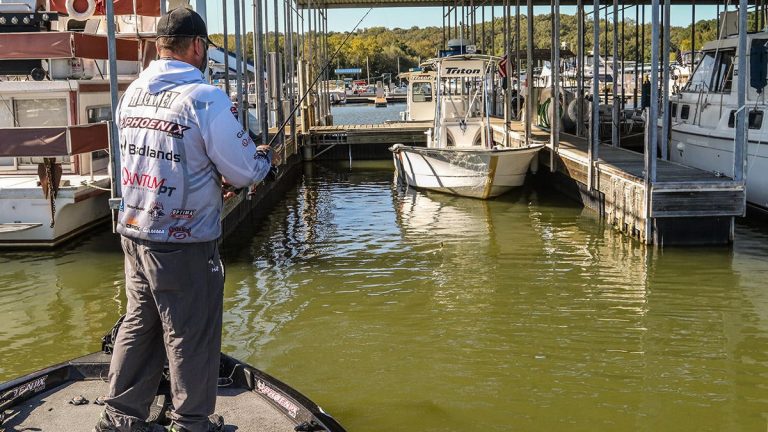
“I typically do that when I’m fishing what I call traditional cover like wood, pads, grass and marinas,” Hackney said. “I don’t do it out in the open water; I use it in places where you would typically fish a Texas rig.”
So why not just use a Texas rig? Well, in the aforementioned scenarios, Hackney gives the big T a good workout. However, at some point, fish lose interest – they wise up to repetitive looks and compel anglers to either move on or send in the B-Team.
“That drop shot is a finesse way of fishing that bigger profile bait,” Hackney explains. “It gives that bait a totally different action from a traditional Texas rig. It gives it that weightless appearance.
“That’s the deal with a drop shot; it gives that bait such a natural action. Whether I’m using a Menace or a Rodent, it tends to drift on that line, so it’s a very natural action that you don’t get (as much) with a Texas rig.”
Fishing pressure guides a lot of our decisions; but as Hackney notes, that’s often a self-generated vexation.
“Once the fish get acclimated to what I’ve been doing, I can change it up with a drop shot,” he said. “I can have a Menace rigged up on a Texas rig and then I can have one on a drop shot, but they are two totally different deals.
“You can be getting a reaction strike by flipping that menace on a Texas rig, but that drop shot allows me to put that bait on the fish and leave it. Basically, I don’t drop shot when fishing is easy. I typically resort to a drop shot when the water’s clear, the fishing pressure is heavy or, for some reason, the bite has turned off.”
Rigging and tackle
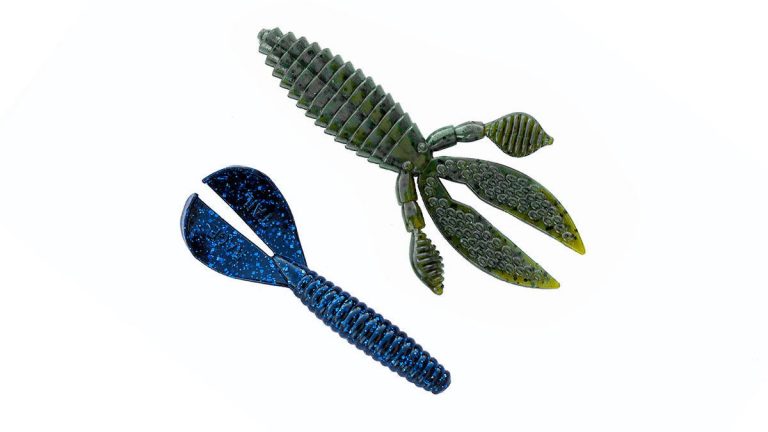
No surprise, the bulked-up drop shot’s assignments typically require stouter tackle. Starting with the hardware, Hackney likes a 3/0 to 5/0 Owner Jungle Flipping Hook. The keeper helps keep his larger bait straight and in the perfectly horizontal position necessary for clean hook sets.
Unlike the traditional drop shot deal, Hackney replaces a spinning outfit with baitcasting gear. He finds a 7-foot, 6-inch medium-heavy Lew’s flipping/pitching rod provides the right blend of lighter tip action for effective bait motion with the muscle needed to separate big fish from cover.
While his light duty spinning rods carry the standard braid-to-fluorocarbon setup, Hackney goes straight fluoro on his bulked-up outfits. The bulkier rig accommodates 12- to 16-pound line – as much for heavy cover necessity, as for the bait dynamics.
“You use that light line to get that action out of those little baits,” Hackney said of traditional drop shot setups. “If you put a Dream Shot on 15-pound test, you don’t get much action out of it because the line is so stiff.
“When you’re bulking up your drop shot, you’re able to use bigger line because it doesn’t impede that bigger bait’s action.”
Hackney’s tackle tip: “The deeper I fish, the lighter line I use. If I’m pitching that bulky drop shot up shallow, I’m going to use 16-pound line; but if I’m fishing it deeper, around grass lines and stuff like that, I’ll downsize the line to get more action out of the bait.
“I believe the more water you have over your bait, the more action you need. It’s not that I’m worried about the fish seeing that 16-pound line, I’m just trying to get the maximum action out of that bait.”
Tactical takes
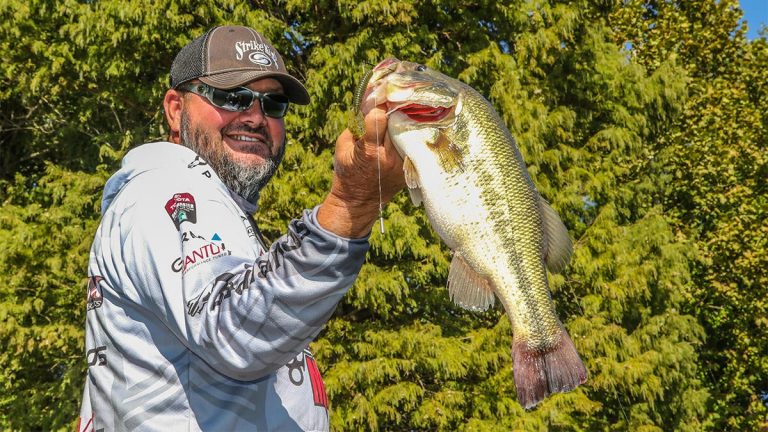
The bulked-up drop shot’s a good tool for diversifying your arsenal and expanding your productivity on the stuff you’re already fishing. Case in point: In his Louisiana home waters, Hackney spends a lot of time around cypress trees, a scenario into which drop shots rarely go.
“Those fish around most cypress trees in the country never get to see that presentation because the average fisherman is a Texas rig guy,” Hackney said. “Typically, a drop shot gets more bites than a Texas rig, so you could be in a situation where you’re not getting many bites with a drop shot, but you’re not getting any bites with a Texas rig.
“You will increase your bites with a bulked-up drop shot because it’s a more natural presentation than a Texas rig. It’s showing those fish something they’re not used to seeing.”
Wherever he throws his bulked-up drop shot, Hackney stresses the importance of a proper hook set. Forget that eye-crossing Texas rig response; a measured pull lets the business end of that hook do its thing.
“If you snap the hook set, you’ll jerk the bait out of their mouth,” Hackney said. “It’s a tight line and you’re just loading the rod. It’s still power fishing, but it’s the finesse version of power fishing.”




